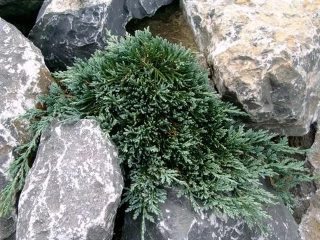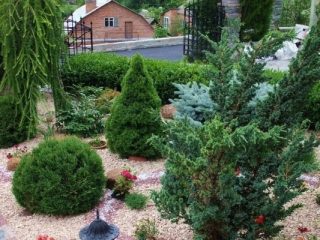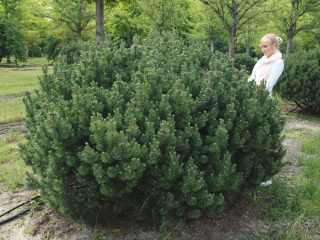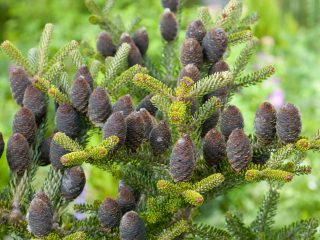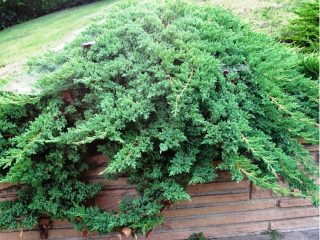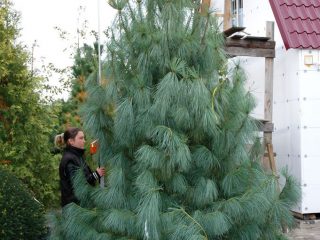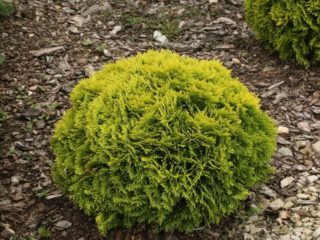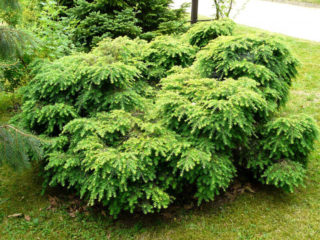Content
Staghorn sumac is an ornamental plant with numerous valuable properties. Before planting a crop on a site, it is worth studying its characteristics and basic requirements.
Why is the tree called vinegar tree?
Sumac can also be found under the name vinegar tree. This is due to the high acidity of the plant’s fruits - it is impossible to eat them without special preparation, the taste is too specific.
What does a sumac tree look like?
Vinegar tree, or staghorn sumac (Rhus typhina) is a plant of the Anacardiaceae family, which is a shrub or small tree. It has a short branching trunk and thick shoots covered with brown hairs. Old branches have smooth or scaly bark, dark brown in color.The leaves of staghorn sumac are lanceolate, finely serrated, with a rounded base and a pointed tip, pubescent below and bare at the top. The crown of the plant is umbrella-shaped, wide and slightly flattened.
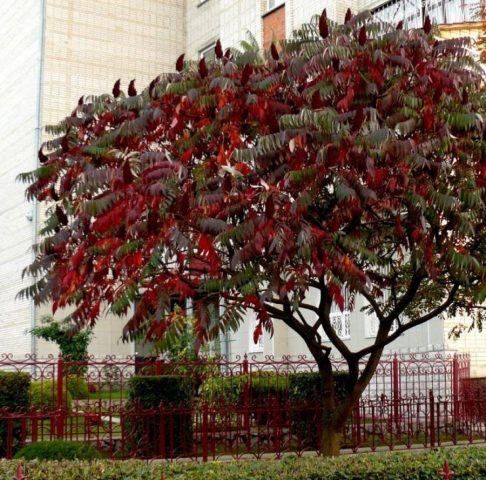
Staghorn sumac reaches 6-8 m in height
From May to July, the vinegar tree blooms with small yellowish-green buds, collected in conical panicles at the ends of the shoots. The brushes reach 11-25 cm in length. Pollination occurs due to insects; in September and October, the fruits of the sumac tree are formed - small drupes up to 5 mm in diameter, collected in cob clusters. The berries are bright red at first, then become darker and covered with hairs. They can remain on the shoots throughout the winter until next year.
Where does the vinegar tree grow?
In its natural form, staghorn sumac is distributed in the eastern regions of North America. It is also found in temperate climates in Eurasia, China, New Zealand and Australia. In central Russia and the Moscow region, the vinegar tree is grown as an ornamental crop. Sumac is highly drought- and frost-resistant and can develop in places with unfavorable ecology.
Varieties and hybrids
The antler tree, or sumac, is represented by numerous varieties. You can name several of the most popular hybrids among gardeners.
Dissecta
The height of this variety of staghorn sumac is about 4 m; the shrub can spread up to 6 m in diameter. It prefers well-lit areas and does not have high requirements for moisture intensity.It blooms with yellowish flowers at the beginning of summer, has decorative leaves - feathery, large, with a complex pattern. In autumn, the shrub blades turn orange or dark red.
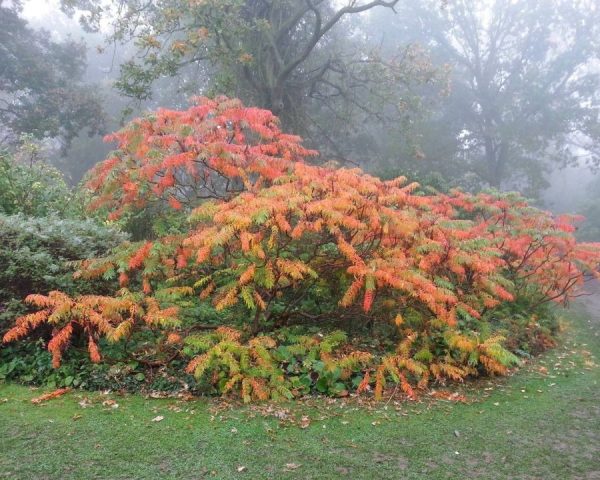
Sumac Dissekta tolerates cold temperatures down to -25 °C
Bailtiger
The hybrid variety of staghorn sumac grows to only 1.5-2 m. It has deeply dissected bright green leaves, which turn yellow in summer. The flowering of the shrub is quite modest; the hybrid is mainly valued for its beautiful openwork crown.
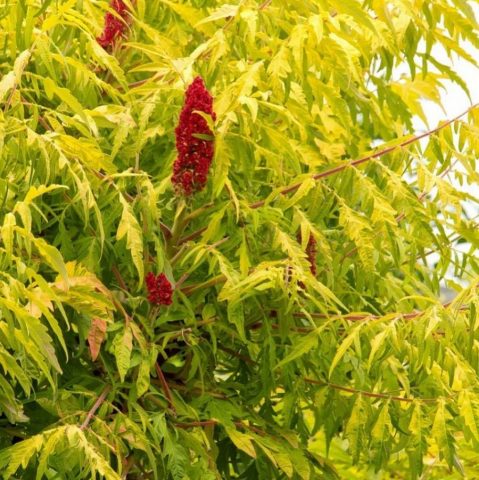
Sumac Bayltiger may freeze slightly in the Moscow region, but quickly regains its shape
Tiger Eyes
Another variety grows to an average height of 3 m. Photos of the staghorn sumac plant show that the variety is distinguished by a wide, lush crown. In summer, the foliage of the shrub is green, and in autumn it turns pale orange or dark burgundy. The variety blooms with light green male and red-brown female buds, collected in lush panicles. It produces almost no root shoots and is popular in garden growing and urban landscaping.
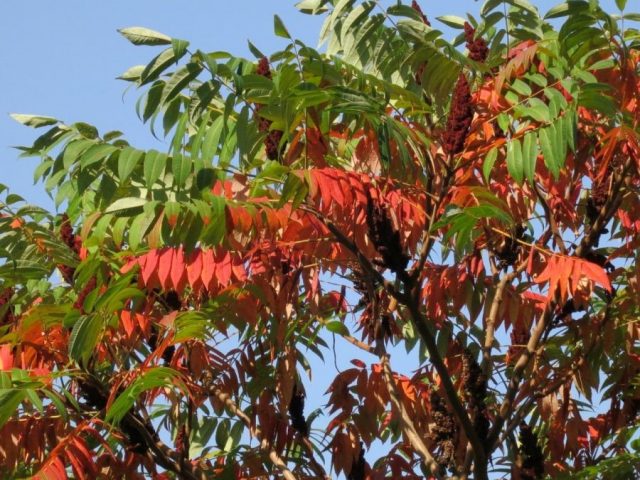
The Tiger Ice variety blooms in June and July.
Planting a Vinegar Tree
Planting a sumac tree in the Moscow region is quite simple. The crop is characterized by increased endurance; it is enough to follow the basic rules of agricultural technology and provide the plant with basic care.
On the site for staghorn sumac, select a dry or moderately moist place with light sandy or rocky soil. The soil pH should be alkaline or slightly acidic. When growing, the shrub requires good lighting; in the shade it develops worse and does not acquire bright colors in the fall.
The immediate algorithm for planting a plant looks like this:
- At the beginning of May or September, a 50x50 cm pit is prepared in the selected area.
- Place a drainage layer on the bottom of the recess.
- Fill the hole up to half with a substrate of garden soil and humus, taken in equal proportions.
- Water the soil generously and wait until it settles.
- Place a staghorn sumac seedling in the center of the recess.
- Straighten the roots of the plant and sprinkle the remaining voids with soil.
- Once again, water the seedling abundantly with 10 liters of water.
When planting, the root collar of staghorn sumac is left flush with the ground surface. It is recommended to mulch the soil immediately so that moisture evaporates more slowly.
How to care for a staghorn sumac tree
When growing staghorn sumac, it is necessary to provide the crop with basic care. It comes down to several events:
- Watering. The vinegar tree is highly resistant to drought. The plant needs to be watered only when there is a long absence of precipitation and the top layer of soil has completely dried out. The procedure is carried out in the evening or in the morning, using lukewarm water, previously settled.
- Feeding. Staghorn sumac develops well in poor soil, but with ample application of fertilizers it begins to grow worse. There is practically no need to feed the plant. It is allowed to add complex minerals to the water for irrigation once per season in early spring. You can use ammophoska or the drug Fertika.
- Trimming. Staghorn sumac does not need to be formed, but in early spring it is recommended to remove dry and frozen shoots of the plant.Also, from time to time it is worth eliminating root suckers that can appear at a distance of several meters from the main bush.
- Loosening. In order for staghorn sumac to develop without problems, it is recommended to regularly stir up the soil in the tree trunk circle to a shallow depth. This will improve soil aeration and prevent the development of fungal diseases.
With the onset of autumn, it is necessary to densely mulch the trunk circle of the shrub with organic material with a layer of at least 6 cm. Adult plants do not require full shelter; it is recommended to insulate the seedlings with spruce branches.

You can prevent the growth of staghorn sumac by installing a border strip around the perimeter of the site and deepening it into the soil up to 50 cm
How does the vinegar tree reproduce?
There are several ways to propagate a sumac tree. The culture germinates well when planted by seeds, cuttings and root suckers.
How to grow staghorn sumac from seeds
To germinate staghorn sumac from seeds, you need to collect the fruits of the plant in late summer or autumn and lay them out to dry. After the remaining moisture has evaporated, the grains are removed from the berries and stored in a dark place until mid-winter.
Before planting, the seeds are scarified - the dense shell is slightly damaged artificially. It is also recommended to fill the material with hot water at a temperature of about 90 ° C, let it cool, and then soak it in warm liquid for a day. Preparation will speed up the germination of staghorn sumac seeds. If you skip this stage, the seedlings will develop very slowly or will not sprout at all.
Staghorn sumac seeds should be planted in late February or early March in shallow containers at home.Cultivation is carried out according to standard rules; young bushes are transferred to the ground no earlier than the end of May. It is necessary to wait until the soil and air warm up to a temperature of 10-15 °C.
Root shoots
You can grow staghorn sumac or vinegar tree on your site using root shoots of the crop. The diagram looks like this:
- In spring or early autumn, the strongest and tallest offspring are selected, and the rest are completely removed.
- Selected shoots are dug up and cut off from the main rhizome with a sharp shovel.
- Dip the staghorn sumac shoots into Kornevin's solution and immediately transfer them to separate holes in the garden.
- Sprinkle with soil and water properly.
Staghorn sumac is provided with standard care throughout the season. By autumn it manages to take root well.
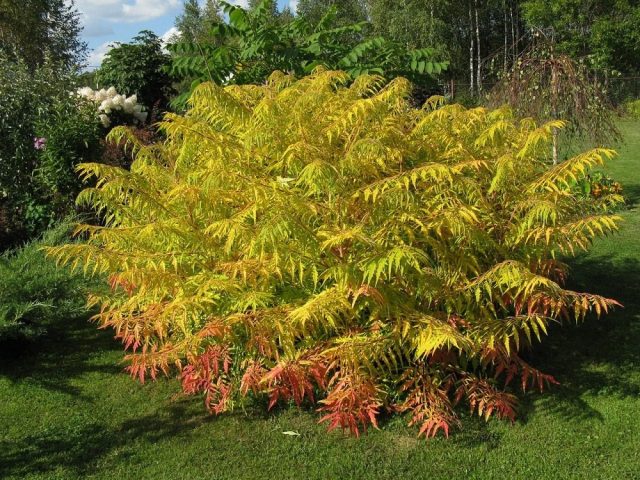
Staghorn sumac from root shoots can grow up to 6 m in diameter in just three years
Cuttings
To propagate staghorn sumac, you can use the cutting method. The procedure is carried out as follows:
- At the beginning of spring, shoots up to 10 cm long are cut from a strong, healthy plant.
- In the greenhouse, cuttings are planted in a mixture of peat and sand with a slight slope.
- Water the sprouts and cover them with cut bottles on top.
The temperature in the greenhouse should be about 20 °C. In the southern regions, sumac can be propagated by cuttings immediately in open ground. After new leaves appear on the shoots, you can remove the cover from them and provide the plants with standard care.
Applications of vinegar tree
Staghorn sumac is valued not only for its decorative qualities, but also for its beneficial properties. The plant is used to decorate garden plots, and is also used in cooking and folk medicine.
In landscape design
Staghorn sumac has a well-developed root system and is particularly hardy. Shrubs can be planted on sandy, poor soils, on crumbling slopes, or on highly alkaline soil. The vinegar tree is well suited for creating windbreaks because it has a spreading, dense crown.
In landscape design, shrubs are used for single planting and for forming artistic compositions. The plant becomes especially decorative in the fall, when its leaves acquire a bright orange or crimson color. The plates remain on the branches for quite a long time and fall off only with the arrival of winter. At the same time, until spring the bush continues to be decorated with bright red, spectacular berries.
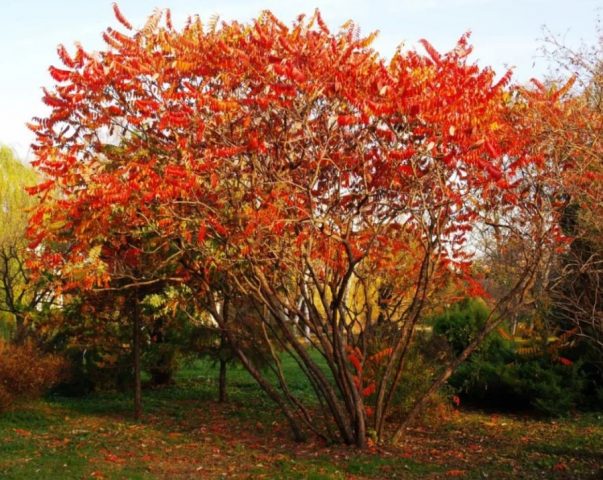
You can use staghorn sumac to create bright, expressive accents in the garden.
It is not recommended to place staghorn sumac in landscape design near manicured lawns and flowering flower beds. The plant's root suckers can spread beyond the designated area and create problems for neighboring crops.
In cooking
True to its name, the vinegar tree produces very sour but edible fruit. In cooking, the berries of the plant are used:
- for preparing decoctions and lemonades;
- for flavoring jelly and jam;
- for making vinegar;
- for adding to cakes, pies and desserts.
Dried fruits are used in small quantities as a seasoning. Before use, the berries are soaked in cold or hot water to make the taste less sour. But you shouldn’t boil sumac fruits - this releases tannins, which give the decoctions a strong bitterness.
In folk medicine
The beneficial properties of the sumac tree allow it to be used as a medicinal raw material.All parts of the plant have valuable qualities - bark, roots, leaves, flowers and berries. For treatment, vinegar tree is used:
- for swelling and excess weight;
- with diarrhea;
- with weak appetite;
- with slow digestion;
- for abdominal pain;
- for inflammation and infections;
- with urinary incontinence.
Sumac root has emetic properties, which is why it is used for poisoning. Externally, the raw materials of the vinegar tree are used for wounds and ulcers to disinfect damage and quickly restore the integrity of the skin and mucous membranes.
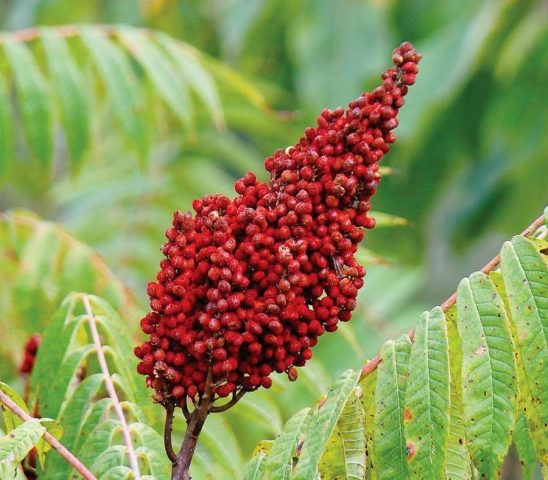
Staghorn sumac in folk medicine is beneficial for asthma
Conclusion
Staghorn sumac is a beautiful drought-resistant plant that can thrive in the poorest soils. Caring for the crop is very simple; you don’t even need to water or feed the bush.
